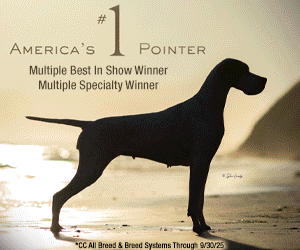Meet the Belgian Laekenois
Click here to read the complete article
Belgian Laekenois - pronounced Lak-in-wah
By Peri Norman
 One of the most oft-quoted descriptions of the varieties of Belgian Shepherd Dog is that of Mme. Jacqueline Aubry in her book Le Berger Belge. It reads as translated “Casual outfit, plain and sober, but full of class for the Malinois with his short, smooth coat of warm red with black mask and overlay so characteristic and so expressive of the variety. Classic afternoon attire for the Groenendael, enveloped in his splendid mane, so long and dense. Splendor of evening clothes for the Tervuren, who, in addition to the beauty of his long coat, has magnificent warm color with shades of fire, or the delicacy of grey with its clever shadows.” Whether Mme. Aubry actually omitted a description of the Laekenois or those who translated her work felt it unimportant, I cannot say. Perhaps the omission of the Laeken from Mme. Aubry’s description of Belgian Shepherd Dogs did not reflect the lack of numbers, but simply that the “description” did not fit with the elegant verbiage used to describe the other varieties. The standards of Belgians all over the world, whether in countries where they remain varieties of one breed (the vast majority) or they are separated into individual breeds, bear remarkable similarities except, of course, in the descriptions of coat and color. The American Belgian Laekenois Association standard says, “The coat must have a texture which is rough and coarse giving a disorderly, tousled look” while the FCI standard says, “What especially characterises the rough hair variety is the roughness and dryness of the hair, which, moreover, is rasping and tousled.”
One of the most oft-quoted descriptions of the varieties of Belgian Shepherd Dog is that of Mme. Jacqueline Aubry in her book Le Berger Belge. It reads as translated “Casual outfit, plain and sober, but full of class for the Malinois with his short, smooth coat of warm red with black mask and overlay so characteristic and so expressive of the variety. Classic afternoon attire for the Groenendael, enveloped in his splendid mane, so long and dense. Splendor of evening clothes for the Tervuren, who, in addition to the beauty of his long coat, has magnificent warm color with shades of fire, or the delicacy of grey with its clever shadows.” Whether Mme. Aubry actually omitted a description of the Laekenois or those who translated her work felt it unimportant, I cannot say. Perhaps the omission of the Laeken from Mme. Aubry’s description of Belgian Shepherd Dogs did not reflect the lack of numbers, but simply that the “description” did not fit with the elegant verbiage used to describe the other varieties. The standards of Belgians all over the world, whether in countries where they remain varieties of one breed (the vast majority) or they are separated into individual breeds, bear remarkable similarities except, of course, in the descriptions of coat and color. The American Belgian Laekenois Association standard says, “The coat must have a texture which is rough and coarse giving a disorderly, tousled look” while the FCI standard says, “What especially characterises the rough hair variety is the roughness and dryness of the hair, which, moreover, is rasping and tousled.”
The Belgian Laekenois can be a rough and tumble sort of dog. Historians of Belgian Laekenois relate that in the late nineteen century this rough-haired variety of shepherd dogs were used, not only for herding, but also to guard the laundry-bleaching fields of northern Belgium from human thieves. The Belgian Shepherd dogs, like so many other Continental herding dogs, were excellent protectors of person and property. The dog considered to be the foundation stud of the Belgian Laekenois was purchased by M. Adrien Janssens in 1885 from a cattle dealer outside of Brussels. M. Janssens is thought of as the father of the Belgian Laekenois. That dog, Vos de Laeken (or Vos I), a pale fawn rough-hair and his mate, Lise de Laeken, a brown-brindle smooth-hair made an impactful contribution not only to the other varieties of Belgian Shepherd Dogs, but also to the Bouvier des Flandres and the Dutch Shepherd. These dogs share in common their talents as herding dogs and protection dogs, and also their extremely high level of intelligence, biddability and devotion to their master and family.
In 1891, Professor Reul presided over a gathering on the outskirts of Brussels to examine and classify the local herding dogs. The native Belgian Shepherd Dogs were described as square, medium-sized dogs with triangular ears and brown eyes. These were separated into three coat types; long-haired, smooth-haired and rough-haired, color notwithstanding. By 1898, the fussing about color had already begun! The Club du Chien de Berger Belge voted to recommend that the classification of the varieties be based upon the three coat types with “determined colours.”
The discussion about color has raged in Tervuren for many years. In 1914, a grey bitch named Creole out of two Groenendael parents won a major competition and inspired much controversy. Sadly, for the Belgian Laekenois, their numbers and influence of their owners was much less than those of the more populous Tervuren owners and advocates. In 1898, the Belgian Laekenois was assigned the “dark ash grey” color and the more typical fawn dogs were eliminated from many breeding programs. Just how much that might have contributed to the declining numbers of Laekenois relative to the other Belgian varieties is impossible to assess. Not willing to give up without a fight, that same year a group of (presumably disgruntled) fanciers founded the Berger Belge Club. Belgian historian Jean-Marie Vanbutsele reports that this club held “the first dog show dedicated to the first victim of the colour principle: the fawn rough-haired, later called Laekenois”. The aligning and realigning of breeders and supporters of the various varieties or particular colors of varieties has continued to play out on a world-wide basis ever since. As recently as 2006, the American Belgian Tervuren Club voted to modify its standard from “Washed out, predominate color, such as cream or gray is to be severely penalized” to “ Predominate color that is pale, washed out, cream or gray is a fault”. Currently, the AKC Belgian Laekenois standard reads, “All shades of red or fawn to grayish tones are acceptable with traces of black appearing principally on the muzzle and tail. The degree of blackening varies considerably from dog to dog with all variations being equally acceptable. A small to moderate white patch is permitted on the chest and the tips of the toes may be white. White or gray frosting on the chin and muzzle is normal and acceptable.”
In 1925 in the classic work The German Shepherd Dog in Word and Picture author Von Stephanitz makes the following comments. “The Belgians are zealous and clever breeders, but the breeders of the shepherd dog entirely overlook the question of utility and emphasise the importance of the external appearance, which after all is only subsidiary. The shape of the head, the carriage of the ears, the tail, the hair, and above all, colour weigh with them. Everything in hair and colour which does not sufficiently fall in with what any of these little Societies consider as ideal in the race is considered as not “race pure”. The results of inbreeding, which naturally must become more and more, are inevitably bound to appear…” Although some might consider Von Stephanitz’ comments harsh, in light of today’s world of shrinking purebred gene pools, he might also be considered a brilliant commentator highlighting a persistent concern that has affected the Laekenois even more severely than the other varieties of Belgians because of their significantly lower numbers in the US and worldwide.
Because of their relative rarity many fanciers of the other Belgian varieties are often limited in their experience with Laekenois. Karyn Cowdrey is a very successful Belgian Tervuren breeder, owner and exhibitor of many years. When asked about her recent acquisition of a Belgian Laekenois, she shared the following comments. ”Really overall, they are just like living with any of the other Belgians in my experience. They need solid socialization during their developmental stages and training from an early age to have the best outcome.” Like the other varieties of Belgians, the Laekenois are incredibly versatile and can excel at herding, tracking, obedience, agility and just about anything we ask them to do. They also do best in a home experienced with high-energy herding/protection dogs. The Belgian Laekenois, in most cases, are “too much dog” to do well as a pet unless the owner is particularly mindful and able to provide them with plenty of exercise and mental stimulation.
The Belgian Laekenois has a rough, tousled, weather-resistant coat, but it does require some grooming. A weekly combing or brushing to remove the dead hair is sufficient for most Laeken. Rui Alves Monteiro of Casa Mont’Alves Belgian Laekenois in Portugal says, “There is the idea that laekenois must be trimmed or pluck the hair when moulting or fix it a little for a dog show. There are still breeders who support this view, however if the dogs are in accordance with the breed standard it will not be necessary because the coat will fall naturally with the brush strokes. We should not forget that laekenois is a working dog and rustic.” As with other wire-coated dogs you would never want to use scissors or clippers on the Laekenois coat. This will destroy the naturally weather-resistant texture of the coat and it will become softer, cottony and much more difficult to maintain. Bathing should be kept to an absolute minimum, but a proper Laekenois coat sheds dirt and debris easily and retains almost no doggie odor.
 The American Belgian Laekenois Club was founded in 1995 and the Belgian Laekenois was accepted as a Foundation Stock Service breed in 1998. The club’s mission statement reads, “The mission of the Club is to do all possible to bring the natural qualities of the Belgian Laekenois to perfection; to encourage sufficient fanciers of the breed to meet the requirements of the American Kennel Club; and to do all in its power to protect and advance the interests of the breed and to encourage sportsmanlike competition at dog shows and performance /companion events.” Progress was made and in 2011 the Belgian Laekenois was accepted into the Miscellaneous class for competition at AKC shows.
The American Belgian Laekenois Club was founded in 1995 and the Belgian Laekenois was accepted as a Foundation Stock Service breed in 1998. The club’s mission statement reads, “The mission of the Club is to do all possible to bring the natural qualities of the Belgian Laekenois to perfection; to encourage sufficient fanciers of the breed to meet the requirements of the American Kennel Club; and to do all in its power to protect and advance the interests of the breed and to encourage sportsmanlike competition at dog shows and performance /companion events.” Progress was made and in 2011 the Belgian Laekenois was accepted into the Miscellaneous class for competition at AKC shows.
Still the Belgian Laekenois remains a relative rare breed in the United States. Karyn Cowdrey shares the following thoughts about acquiring a Laekenois. “We have only a few litters born in North America from rare time to time so that people should be prepared to potentially import a dog if they decide the breed is the right one for them.” As with any dog, it is wise to do a thorough investigation of the health history of the ancestors and close relatives of any litter you might consider. A breeder whom you are comfortable with should be selected with great care, and be prepared to wait for the right puppy. Then let the adventure begin!
Short URL: http://caninechronicle.com/?p=72582
Comments are closed











